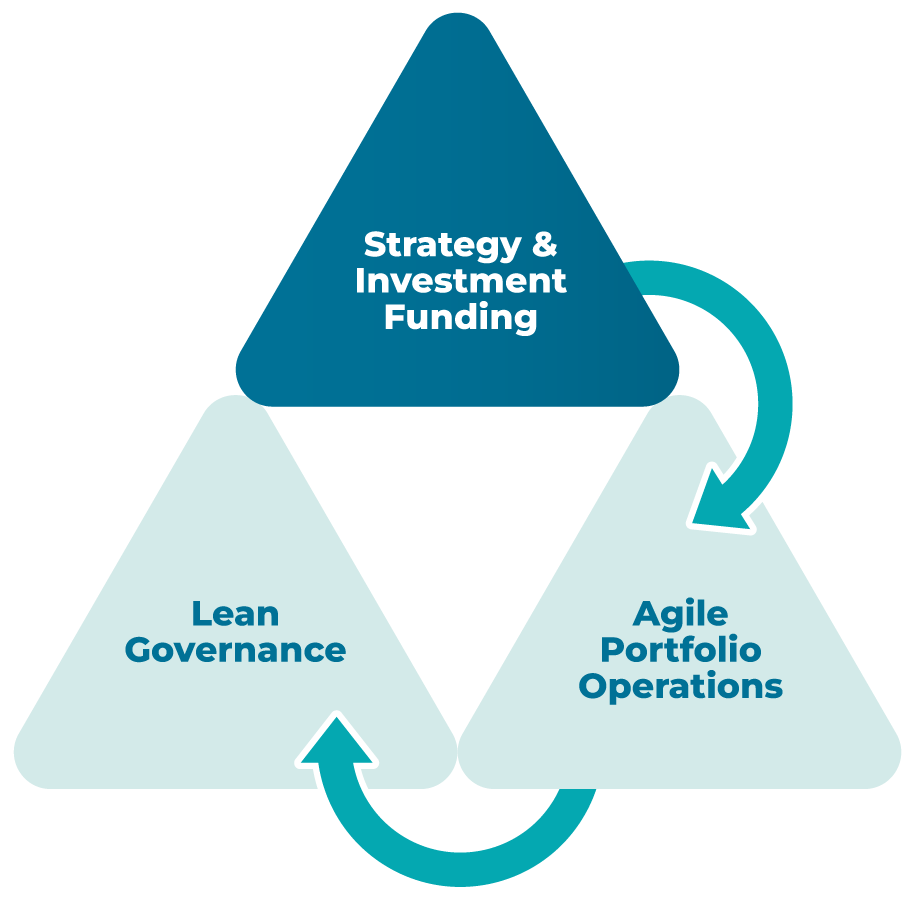
IT Governance Archetypes: a practical case study on Governance Principles in a mid-sized organization

Is it time to rethink your ERP?
After defining an organization's strategy for a given year, it's essential to materialize the achievement of strategic objectives through programs and projects that will direct the use of financial, human, and technological resources.
At this point, it's common to see increased complexity in structuring the portfolio for technology areas, as most projects nowadays involve some - or a lot - of technological requirements. Balancing the needs of business areas with those of the technology department itself becomes a challenge.
Meanwhile, we must not forget that other areas also face challenges specific to their roles. Often, we observe significant difficulties in translating strategy into a well-structured project portfolio, as well as in managing day-to-day demands.
How to prioritize your portfolio in a structured way
Initiatives arise from operational layers, addressing specific pain points without necessarily aligning with intended objectives, and from executive layers, often disregarding operational pain points and limitations.
In this context, many managers ask themselves: “How can I prioritize my portfolio in a structured way given everything we want to achieve?”.
After defining an organization's strategy for a given year, it's essential to materialize the achievement of strategic objectives through programs and projects that will direct the use of financial, human, and technological resources.
At this point, it's common to see increased complexity in structuring the portfolio for technology areas, as most projects nowadays involve some - or a lot - of technological requirements. Balancing the needs of business areas with those of the technology department itself becomes a challenge.
Meanwhile, we must not forget that other areas also face challenges specific to their roles. Often, we observe significant difficulties in translating strategy into a well-structured project portfolio, as well as in managing day-to-day demands.

Source: ® Scaled Agile, Inc.
In practical terms, Lean-Agile aims to maximize value delivery through continuous delivery and based on a Lean budget that adjusts dynamically.
Shall we understand how it works in practice?
1
Right competencies
establish a team with the right competencies to build the portfolio
The composition of the Program and Project Portfolio should not be done in isolation. Many organizations do not involve the right people in this process and end up prioritizing one perspective over another. Although the strategy is established by an organization's executives, portfolio construction should include various hierarchical levels and expertise to make it as aligned as possible with the business reality.
2
Strategic themes
break down the strategy into strategic themes
Once the team is defined, it's important to break down the strategy into major themes that will guide the portfolio. The themes should reflect the business objectives that will enable the achievement of the strategy and have organizational clarity that facilitates value generation and expected results.
Themes help influence the choices of solutions, partners, activities, customer segmentation, and other business elements. From the themes, one can understand the necessary epics to achieve the vision, assisting in decision-making for the Portfolio Backlog.
3
Roadmap vision
create a portfolio roadmap vision
The roadmap vision will help visualize the duration of each initiative and its epics, bringing major milestones into focus. The Portfolio Roadmap feeds into the Solutions and Projects Roadmap in a living and bidirectional way. Thus, the Portfolio Roadmap also receives information from the Solutions Roadmap and is constantly updated.
4
Establish the backlog
The Portfolio Backlog helps manage initiatives and their epics. To bring visibility and simplicity, it can be managed by a Kanban system. Portfolio management should be centralized, and the team responsible for management should monitor progress with solution teams and other stakeholders.
To prioritize the backlog, SAFe® uses the WSJF (Weighted Shortest Job First) method, which seeks to achieve the greatest economic benefit by evaluating the cost of delay of an initiative against the work required.

Source: Calculating the relative Cost of Delay – ® Scaled Agile, Inc.

Source: A formula for relative WSJF – ® Scaled Agile, Inc.
5
Integrated Planning (PI Planning)
To achieve the desired organizational agility, periods for prioritizing and planning activities can be established, such as bimonthly or quarterly, depending on the organization's dynamism.
This periodic integrated planning will help align teams and other stakeholders to share the vision and priorities of the cycle. From a SAFe® perspective, PI Planning is one of the crucial points for good portfolio management.
At this moment, it is possible to plan the teams' capacity and provide inputs for subsequent refinements. It is also an opportune moment to understand and relate the dependencies of work between teams.
As a result of this planning, we have the planning of the next work increment, highlighting delivery dates, dependencies, and relevant milestones, limiting work in progress (WIP), and agreeing on global objectives and team objectives.
Conclusion
Although conceptually simple, portfolio management is a significant challenge for organizations. We know that maintaining methodologies and agreements requires daily efforts from managers.
However, organizations that manage to stabilize their processes related to the topic are closer to achieving their strategy, with flexibility to adapt in pre-established cycles and greater predictability in their teams' performance.
Remember: involving the right people in portfolio construction, processes and methods aligned with the organization's reality, portfolio construction dynamics, and cycle planning will help promote organizational visibility and collaboration.
Bridge & Co. specializes in portfolio construction and management, as well as conducting ceremonies and planning for technology and business areas. If you found this topic interesting, contact one of our specialists.
